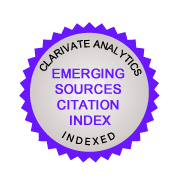Methodological note 3. Between qualitative and quantitative research: the importance of mixed designs
Between Qualitative and Quantitative Research: The Importance of Mixed-Method Designs
Claudia Troncoso-Pantojaa,*, Fanny Petermann-Rochab
aCentro de investigación en educación y Desarrollo (CieDe-uCSC), Departamento de Salud Pública, Facultad de medicina, universidad Católica de la Santísima Concepción. Concepción, Chile. Vicerrectoria de Investigaciónn e Innovación, Universidad Arturo Prat, Iquique, Chile. bCentro de Investigación Biomedica, Facultad de Medicina, Universidad Diego Portales, Santiago, Chile.
---
A key stage in the development of research is recognizing the design or methodological approach that will address the study’s objectives. The questions "how many?" or "why?" intuitively guide the use of quantitative and qualitative research approaches, respectively. However, what happens when one seeks to interpret or contextualize, from the participants' subjectivity, the results obtained from statistical data?
The increasing methodological complexity in current research highlights the need to generalize findings while also gaining a deeper and more reflective understanding of the studied phenomenon. Mixed-method research designs enable the integration of traditional qualitative and quantitative approaches, allowing for a broader analysis or paradigm of the data and its conclusions while maintaining the principles of the scientific method (1).
Like traditional research, mixed-method studies begin with a research question, followed by a statement of objectives where qualitative and quantitative approaches converge, recognition of the type of mixed-method study, data analysis and triangulation, and finally, the study’s conclusions.
Is there more than one type of mixed-method design? Absolutely, and the selection depends on the scenario or context in which the research is conducted. For example, Zoellner et al. (2) describe a classification of mixed-method designs in research within the field of nutrition and dietetics, identifying six types:
- Convergent parallel: The qualitative and quantitative designs hold equal relevance, and the results of both are compared.
- Explanatory sequential: The results of the quantitative design are explained through the application of the qualitative approach.
- Exploratory sequential: Unlike the previous design, qualitative data and analysis are complemented with data obtained through the quantitative approach.
- Integrated quantitatively dominant: Data from both qualitative and quantitative designs are collected jointly; however, the quantitative design holds greater relevance in the study.
- Integrated qualitatively dominant: In this methodological approach, qualitative research takes precedence over quantitative research.
- Transformative: From a theoretical perspective and generally aiming for social transformation or justice, this approach uses qualitative and quantitative research strategies in a single phase, sequentially, or simultaneously.
- Multiphase: Conducted in various sequential phases, where the application and results of quantitative research precede the qualitative phase, maintaining this sequence until the study's objectives are fully evaluated.
Another key aspect of research within a mixed-method paradigm is the type of sampling and sample size, as their assignment must align with the two traditional designs from which they originate. The selection depends on the research objectives. Is the goal to extrapolate the results? Methodologically, this requires a probabilistic selection of participants, a strategy that does not align with qualitative designs, which typically use non-probabilistic sampling. Sykes et al. (3) indicate that bias in mixed-method studies arises from the misalignment of qualitative and quantitative sampling strategies and the extrapolation of statistical results.
Furthermore, mixed-method research requires quality assurance throughout all its processes. One way to ensure study validity is through triangulation. This concept refers to the use of methodological strategies that address the research objective (4). Kelle et al. (5) recognize various uses of triangulation in mixed-method studies that enhance research validity, including:
- Triangulation to assess the validity of qualitative and quantitative results.
- Triangulation to improve the understanding of complementary findings or provide a broader context for results.
- Triangulation as a means to generate a general conclusion from partial findings, which would not be valid on their own.
As can be understood, conducting a mixed-method study is not simply about including an open-ended question in a questionnaire or incorporating alternative responses during an interview. Researchers, research teams, or journal editors must be trained in both quantitative and qualitative research approaches to develop or evaluate a mixed-method study.
For a deeper understanding of mixed-method studies and their quality assessment, refer to the research conducted by Wasti et al. (6) on the importance of this design in healthcare research.
References
(1) Dawadi S, Shrestha S, Giri R. Mixed-Methods Research: A Discussion on its Types, Challenges, and Criticisms. Int. J. Educ. Res. 2021; 2(2), 25-36. DOI: 10.46809/jpse.v2i2.20
(2) Zoellner J, Harris JE. Mixed-Methods Research in Nutrition and Dietetics. J Acad Nutr Diet. 2017; 117(5):683-697. DOI: 10.1016/j.jand.2017.01.018.
(3) Sykes B. Anjuli V, Hancock B. Aligning sampling and case selection in quantitative-qualitative research designs: Establishing generalizability limits in mixed-method studies. Ethnography. 2018; 19(2) 227–253. DOI: DOI: 10.1177/1466138117725341.
(4) Forni P, De Grande P. Triangulation and mixed methods in contemporary social sciences. Rev. Mex. Sociol, 2020; 82(1): 159-189. DOI: 10.22201/iis.01882503p.2020.1.58064
(5) Kelle U, Kühberger C, Bernhard R. How to use mixed-methods and triangulation designs: An introduction to history education research. Educ. Res. J. 2019; 16(1): 5-23. DOI: 10.18546/herj.16.1.02
(6) Wasti SP, Simkhada P, van Teijlingen ER, Sathian B, Banerjee I. The Growing Importance of Mixed-Methods Research in Health. Nepal J Epidemiol. 2022; 12(1):1175-1178. DOI: 10.3126/nje.v12i1.43633.










